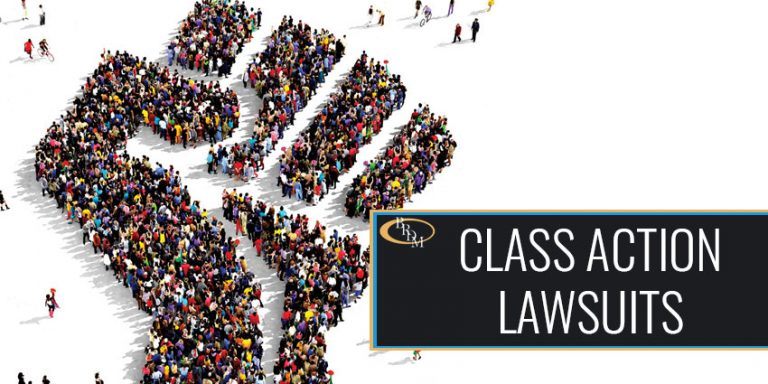Assertio Class Action Lawsuit: Insights into Class Action Lawsuits
Assertio Class Action Lawsuit: Insights into Class Action Lawsuits
Blog Article
Exploring Class Action Suits: What You Need to Know
Course action legal actions have become increasingly widespread in today's lawful landscape, with individuals signing up with pressures to look for redress against corporations and companies. In this discussion, we will explore the ins and outs of course activity claims, shedding light on their definition, the needs for declaring, and the prospective benefits and downsides included. We will dive into the steps entailed in a course action legal action and check out some recent landmark situations that have shaped this area of legislation. Understanding the intricacies and nuances of course action lawsuits is critical for any person seeking justice in a cumulative way, so allow's begin our expedition with each other.
The Meaning of Course Action Claims
A class action claim is a lawful action filed by a team of people who have comparable insurance claims against an accused. Course activity claims are commonly brought when the number of possible complainants is as well large for individual suits to be useful.
One of the key components of a course action suit is that the lead plaintiff, also known as the course rep, represents the interests of all the course participants. The court selects the lead plaintiff based upon their capacity to relatively and sufficiently represent the course. The lead complainant functions very closely with the class action lawyer to look for and build a solid situation compensation or various other treatments on behalf of the whole class.
In order for a class activity lawsuit to continue, the court should license the class. This means that the court determines that the legal action satisfies particular demands, such as numerosity (a large sufficient number of class members), commonness (common concerns of law or truth), typicality (the claims of the lead plaintiff are typical of the course), and competence of representation (the lead complainant and class advice are capable of standing for the course's rate of interests) As soon as the class is licensed, the lawsuit can progress, and any type of judgment or negotiation reached will put on all course members unless they select to opt-out.
Course action claims offer a crucial function in giving access to justice for people that might not have the resources to seek their cases individually. They likewise advertise performance in the lawful system by settling similar insurance claims into a single activity, decreasing the concern on both the court and the celebrations entailed.
Demands for Submitting a Class Action Suit

One more need is that the class needs to be completely countless. The precise variety of class members needed may differ depending on the jurisdiction and the nature of the situation. Nonetheless, it is usually expected that the course should be big sufficient that signing up with all the individual complainants right into a solitary suit is much more reliable than having several separate lawsuits.
Additionally, it is necessary that the class representative, who is the individual or entity bringing the legal action in support of the course, has normal cases and defenses to those of the course participants. The representative should additionally be able to sufficiently and relatively represent the interests of the entire class.

Benefits and Downsides of Class Activity Claims
Course action lawsuits offer both benefits and drawbacks for plaintiffs and defendants entailed in the lawful process. On the one hand, one of the substantial benefits of course action suits is that they supply a reliable and cost-efficient means for individuals with similar cases to go after justice collectively. By consolidating various comparable situations right into one suit, class activities enhance the legal procedure and conserve time and resources for both defendants and complainants.
Another benefit of class activity suits is that they allow people with limited sources to seek payment for their damages. In situations where the potential healing is small, private claims might not be economically sensible. Nonetheless, by joining pressures in a course activity, plaintiffs can merge their sources and raise their chances of acquiring a reasonable resolution.
Moreover, course activities can advertise social modification by holding corporations liable for their activities. By bringing attention to extensive transgression or defective items, course actions can push business to alter their methods, enhance product safety, or implement reforms.
Nonetheless, class actions likewise have downsides. One prospective drawback is that individual plaintiffs may have limited control over the litigation process and the best end result of the instance. The lead plaintiffs and their attorneys typically make essential decisions on part of the whole course, which may not constantly align with the private interests of each course participant.
Furthermore, course actions can be extensive and taxing, commonly taking years to reach a resolution. The complexity and size of these claims can cause delays and long term litigation, which can be annoying for both complainants and offenders seeking a prompt resolution.
Steps Associated With a Class Activity Lawsuit
The procedure of a course action suit normally starts with the identification of a potential course and the filing of a complaint. Once a group of people that share comparable insurance claims against an offender is recognized, the lead complainant, or course agent, files an issue on behalf of the entire course. This complaint describes the alleged misbehavior and looks for problems or other relief for all participants of the course.
After the problem is filed, the court will certainly determine whether the instance fulfills the needs for course accreditation. These demands commonly include numerosity (a large sufficient class), commonality (comparable legal claims), typicality (the lead complainant's claims are representative of the class), and competence of representation (the lead plaintiff and their attorney can adequately stand for the class's interests)
If the court licenses the course, notification is offered to all potential course members, providing the opportunity to opt-out if they wish to seek their very own specific cases - Future FinTech class action lawsuit. If an enough variety of course members remain, the case will continue to the exploration phase, where both sides gather proof and information appropriate to the insurance claims
Complying with exploration, the celebrations may participate in settlement arrangements or proceed to trial. If the situation mosts likely to test and the class dominates, the court will certainly figure out the appropriate damages or alleviation to be granted to the class members.
Recent Spots Course Activity Claims
With a solid understanding of the actions associated with a course action suit, it is currently vital to take a look at some current landmark situations that have actually made a considerable effect in the legal landscape. BioVie class action lawsuit. These cases have not just shaped the way class action legal actions are conducted but have additionally produced adjustments in various markets
One such site case is the Volkswagen emissions rumor, which led to the largest course activity settlement in automobile background. This deception affected millions of consumers worldwide, leading to a class action suit.
One more noteworthy instance is the Johnson & Johnson talcum powder suit. Thousands of ladies submitted legal actions against the business, asserting that their talcum powder items caused ovarian cancer.
These recent landmark situations demonstrate the power of class action suits in holding firms responsible for their actions and seeking justice for damaged individuals. They function as instances of exactly how course action legal actions can cause considerable adjustments and safeguard the civil liberties of consumers.
Conclusion
Finally, course action claims are a legal system that allows a group of people to collectively seek justice for a typical complaint. While they offer several benefits such as effectiveness and cost-effectiveness, there are additionally drawbacks such as potential for minimal settlement and prolonged legal process. Recognizing the steps and demands associated with filing a course action claim is important for people seeking to pursue this lawful method. Current landmark class action suits have highlighted the importance of such cases in advocating for consumer civil liberties and corporate responsibility.
One of the vital elements of a class activity claim is that the lead plaintiff, additionally recognized as the class representative, represents the passions of all the class members.In order for a course activity lawsuit to continue, the court should certify the class. This implies that the court establishes that the suit satisfies certain requirements, such as numerosity (a huge adequate number of course members), commonality (usual concerns of law or reality), typicality (the claims of the BioVie class action lawsuit lead plaintiff are typical of the class), and competence of representation (the lead plaintiff and course counsel are capable of representing the class's interests) As soon as the class is certified, the suit can move ahead, and any type of judgment or negotiation got to will apply to all class members unless they pick to opt-out.
The process of a class action legal action commonly starts with the identification of a potential class and the declaring of a complaint.
Report this page